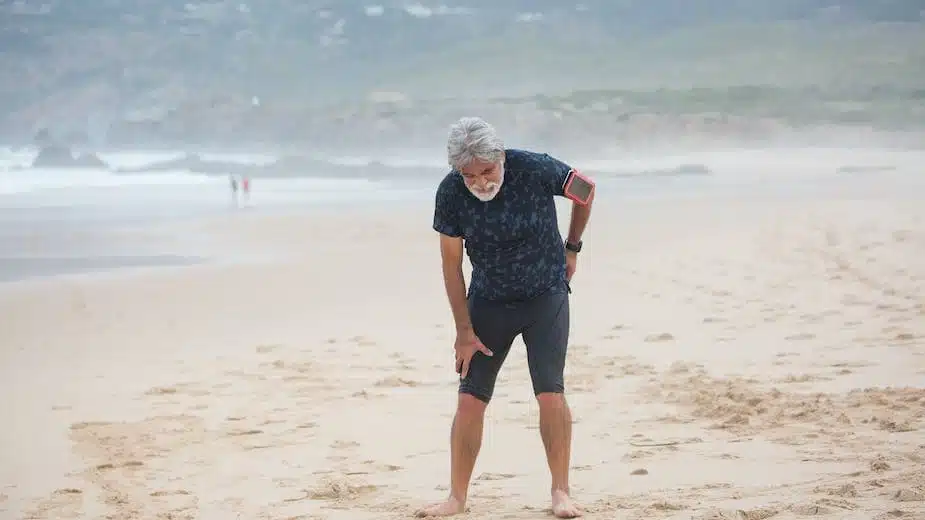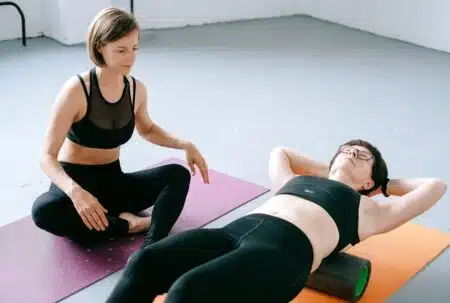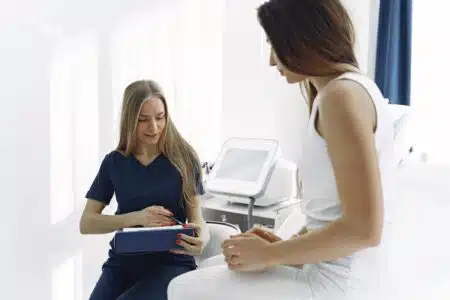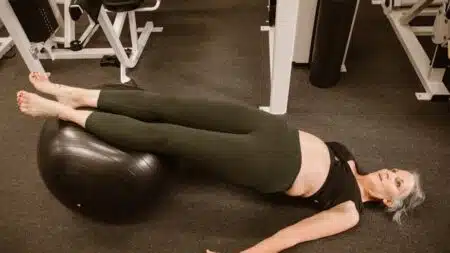Are you struggling with a sore, aching backside that just won’t quit? Does prolonged sitting, standing, or intense exercise leave you battling excruciating butt pain that disrupts your daily life? If so, you’re not alone. Millions of people worldwide grapple with the debilitating effects of gluteal discomfort, desperately seeking relief.
But fear not, for within this comprehensive guide lies the knowledge to conquer your butt pain woes, paving the way to a life of comfort and freedom. We’ll delve deep into the root causes, unravel the subtle warning signs, and equip you with a powerful arsenal of remedies – from simple self-care to advanced medical solutions.
So, buckle up and get ready to take control of your booty troubles because by the end of this journey, you’ll be well on your way to saying goodbye to butt pain forever. Let’s begin by understanding the primary culprits behind this unrelenting discomfort.
The Usual Suspects of Butt Pain
Among the myriad reasons behind butt pain, muscle strains reign supreme as the leading instigator. Whether you’re an avid runner pounding the pavement or a desk jockey glued to your chair, repetitive hip motion and prolonged sitting can wreak havoc on your muscles and tendons.
As these tissues become fatigued, tiny microtears begin to accumulate, ultimately manifesting as larger, more severe injuries. The strained fibers then unleash a world of discomfort, sparking pain with every movement, twist, or pivot.
Runners, in particular, are especially vulnerable to butt pain due to the constant high-impact stress placed on their joints and connective tissues. But even everyday activities that involve awkward twisting or quick pivots can strain the intricate network of stabilizers, such as the hip abductors and rotators.
And let’s not forget the silent culprit – poor posture. Habitually slouching or adopting improper body mechanics can overwork specific muscle groups, leading to an accumulation of strain and, ultimately, butt pain.
The upside? Understanding these primary pain drivers empowers you to make smarter training and lifestyle choices, helping you avoid future injuries and reclaim your freedom from butt pain.
Subtle Signs of Brewing Booty Troubles
Butt pain doesn’t always announce itself with a loud and clear declaration. Instead, it often creeps up on you, disguising itself as subtle, seemingly innocuous symptoms that can easily be overlooked. However, ignoring these early warning signs can lead to more severe and disabling issues down the line.
Here are a few sneaky symptoms that may suggest brewing butt pain problems:
- Low-Grade Persistent Aches: That annoying soreness that refuses to go away can be a telltale sign of accumulating injury. Don’t dismiss it as a minor annoyance; it could be the precursor to something more serious.
- Tingling or Numbness: If you experience unusual sensations like tingling or numbness in your backside region, it could indicate nerve irritation – a condition that demands prompt attention.
- Decreased Mobility: Stiffness and difficulty performing daily activities like walking, bending, or even getting out of a chair could be a red flag signaling an underlying injury that’s impeding your mobility.
Catching these early warning signs allows for quicker intervention, preventing small tissue troubles from evolving into more disabling butt pain and dysfunction. So, tune into your body’s whispers urging you to rest or seek help. Your bottom (and your overall well-being) will thank you later!
First Line of Defense: At-Home Care Basics
When it comes to battling butt pain, simplicity is often the best approach – at least initially. Just like with most muscle or joint discomfort, straightforward at-home care serves as the first line of treatment.
Here are some self-care basics that can provide relief and kickstart the healing process:
- Rest: Take a break from aggravating activities that strain your muscles and allow those strained tissues time to heal. Reduce prolonged sitting durations and give your backside a well-deserved respite.
- Heat Therapy: Soothe inflamed muscles by indulging in warm (not hot) baths, showers, compresses, or applying non-electrical heating pads to the affected area. The gentle warmth can work wonders in alleviating discomfort and promoting blood flow.
- Cold Therapy: After intense exercise or activities that exacerbate your butt pain, alternate with cold packs to help reduce swelling and mitigate inflammation.
- Light Stretches and Exercise: Once the initial pain has calmed down, gently strengthen and mobilize the muscles around your hips, glutes, core, and legs. Low-impact exercises can help maintain flexibility and prevent further injury.
- Ergonomic Support: Pay attention to the surfaces you sit on and avoid low chairs or couches that cause your hips to sink inward. Prop up your feet to maintain proper posture and alleviate pressure on your backside.
Give these home remedies a few weeks to work their magic before moving forward with more advanced options. Sometimes, a little self-care is all your booty needs to bounce back.
The PT Difference: Hands-On Healing
When at-home treatment falls short, it’s time to enlist the expertise of a pelvic health or orthopedic physical therapist (PT). Through manual therapy, targeted stretches, and functional retraining, your PT will identify the weakened areas contributing to your butt pain and customize a treatment plan to build strength, flexibility, and lasting relief.
The right blend of modalities like ultrasound, electrical stimulation, or dry needling, combined with individually calibrated exercises, can provide superior relief that many find superior to relying solely on pain medication.
An experienced PT won’t just focus on the painful spot; they’ll assess the entire lumbopelvic complex to address the root cause of your discomfort. Here are some interventions you can expect:
- Myofascial Release: Hands-on pressure and tissue mobilization gently break up knotted muscle bands or scar tissue adhesions, boosting blood flow and promoting healing.
- Neuromuscular Re-education: Using touch input, electrical stimulation, or biofeedback, therapists retrain nerves and muscles to function synergistically again, restoring proper movement patterns.
- Muscle Energy Techniques: Gentle contractions and stretches address joint restrictions, improving range of motion and alleviating tension.
- Core Integration: By linking the muscles in your hips and backside with functional movement patterns through progressive exercises like bridges and lunges, your PT will help you regain stability and control.
- Postural Alignment: It’s not just about advice; your PT will provide customized strength and flexibility programming to help sustain your gains and correct underlying postural imbalances contributing to your butt pain.
Combining physical therapy with at-home care can yield enhanced outcomes, putting you on the fast track to a pain-free posterior.
Medication Considerations
When the discomfort becomes too severe to manage with self-care and physical therapy alone, your healthcare provider may recommend incorporating medication into your treatment plan.
Over-the-counter (OTC) non-steroidal anti-inflammatory drugs (NSAIDs) like ibuprofen can temporarily dampen severe butt pain when combined with active rehabilitation. However, if OTC options become inadequate, your provider may suggest stronger prescription anti-inflammatories or muscle relaxants for short-term use.
Topical ointments containing menthol, capsaicin, or other analgesic ingredients can also provide localized relief by numbing the affected area or increasing blood flow.
For chronic nerve-related butt pain unresponsive to other measures, some providers prescribe agents like gabapentin or tricyclic antidepressants in low doses to help manage neuropathic discomfort.
In cases where structural joint damage is causing debilitating butt pain, injected corticosteroid preparations or pain-blocking nerve ablation procedures may offer relief when other treatment options have been exhausted.
However, it’s crucial to discuss the pros and cons of medication usage thoroughly with your healthcare team, as some drugs can have potential side effects or interactions with other medications or conditions.
Exploring Alternative Therapies
Beyond traditional Western medicine, complementary and alternative therapies are gaining popularity as potential solutions for butt pain relief. Two modalities worth considering are:
- Acupuncture: This ancient practice involves the precise placement of fine needles at specific points on the body to balance energy flow and stimulate the release of natural pain-killing chemicals. While more research is needed, early studies indicate that acupuncture may ease various sources of glute and lower back discomfort.
- Chiropractic Care: Spinal adjustments and joint manipulation aim to improve alignment, mobility, and reduce inflammation and pain. While the evidence is still preliminary, some patients report positive results in alleviating butt pain through chiropractic treatment.
While the scientific data on the efficacy of these alternative therapies is still emerging, many patients today are seeking integrative solutions that combine conventional and complementary approaches. It’s essential to discuss such alternatives with your established healthcare providers to ensure they align with your overall treatment plan and do not interfere with any existing medical conditions or treatments.
Last Resort: Surgical Intervention
Most cases of muscular butt pain can be resolved without resorting to surgery. However, certain unremitting conditions involving pinched nerves, severely limited joint function, or structural abnormalities may eventually require surgical intervention if more conservative treatment pathways fail to provide adequate relief.
Procedures like discectomy (removal of a portion of a herniated disc), spinal fusion, joint replacement, or nerve decompression surgeries can offer lasting butt pain relief, but they also carry standard operative risks and potential complications.
Before considering surgery, it’s crucial to obtain an accurate diagnosis through imaging tests, nerve conduction studies, or diagnostic injections to determine if surgical correction aligns with your individual situation. Thoroughly discuss the pros and cons of any recommended surgical approaches with your healthcare team and weigh the potential benefits against the risks and recovery process.
Reclaim Your Comfort: Key Takeaways
If you’re currently grappling with persistent butt pain, stay hopeful – relief is within reach. While the intricate interplay of muscles, joints, and nerves in the pelvic region can complicate finding a quick fix, an accurate diagnosis and a targeted, multi-modal treatment approach can guide most butt pain sufferers toward lasting relief.
Patience is key as you navigate corrective stretches, functional movement retraining, manual therapy, and moderate activity. But trust that your persistence will pay off, allowing you to reclaim your comfort and freedom from butt pain.
Remember to listen to your body’s whispers urging rest when fatigue and dysfunction build silently over time. Getting ahead of the pain cycle early makes reversal much more achievable without the progression to lasting damage.
With the right mindset, a comprehensive understanding of your condition, and a willingness to explore various treatment options, you can bid farewell to butt pain and embrace a life free from the constraints of discomfort. So, take that first step today, and let your journey to a pain-free posterior begin!



